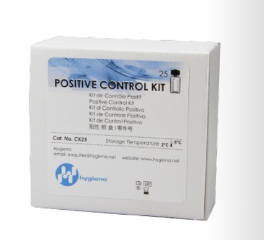Testing for Interference of ATP Tests
When ATP test results are lower than expected it can raise concerns of interference of the test by residual chemicals remaining on the surface being tested. There can also be concerns related to results being always higher after cleaning again. The latter is generally uncommon, but this can be related to effects of some residual chemicals.
Failure to rinse excess cleaning chemicals away during the final stages of a cleaning process, or incorrect preparation of sanitizing chemicals too high in concentration, can result in “quenching“ or elevation of an RLU result. This means the reagents of the test could be damaged, and the bioluminescence reaction subsequently inhibited or enhanced. This results in the test being unable to produce the light needed, or too much light, to provide an accurate measure of ATP contamination.
For the majority of sanitizers as long as they are prepared to the correct concentration they will have a limited impact on ATP test results.
Cleaning chemicals that should be rinsed away or removed during cleaning are most likely to quench the test if remaining on the surface. As part of cleaning, procedure tests should be taken to confirm cleaning chemicals have been removed from a surface or equipment. These include tests for pH or conductivity.
The Hygiena Positive Control Kit provides a means to check for quenching or reducing of the UltraSnap or SuperSnap results to confirm the RLU results are accurate.

The Positive control vial contains freeze-dried ATP.
Testing for Quenching
Perform a Control Test
For a control test, follow the product instructions for the Positive Control Kit here.
Quenching Test
- Take a new unused UltraSnap or SuperSnap and swab the surface where quenching is suspected.
- Open a fresh positive control vial.
- Using the same swab used to sample the surface rub this around the inside of the new positive control vial until all the ATP solid has been absorbed onto the swab.
- Activate the swab test and then read in the Hygiena luminometer.
- If result is below the recommended value from the Positive Control Kit instructions, then there is likely a quenching affect from sanitizer left on the surface.
- If the result is significantly more (>+30%) than the control test, then it is likely elevated from sanitizers left on the surface.
- If possible where there are concerns over quenching, rinse the surface and repeat the above steps.
Testing for interference where an increase in RLU results is suspected can be carried simply by dipping the swab tip ( ideally pipetting) to pick up a small amount of the sanitizer in its in-use concentration and then activating and measuring the swab. The result should be no more than 4 RLU.
If possible where routine testing can be taken before sanitizer is applied then this will help reduce the risk of any quenching. Also, this will help prevent the need to reapply sanitizers if recleaning is required.
Contact Hygiena Technical Support for further assistance.
- Phone: 1-888-HYGIENA (1-888-494-4362, option 2)
- Email: techsupport@hygiena.com
- Submit a Support Ticket
- Schedule a Microsoft Teams meeting with support